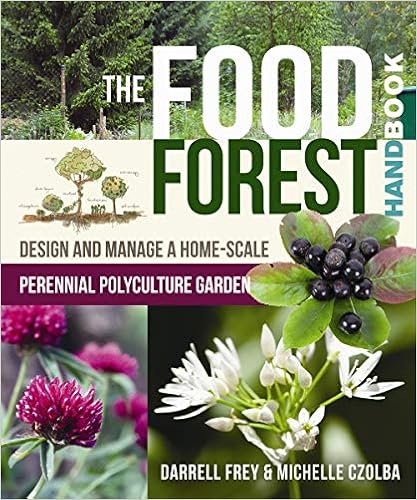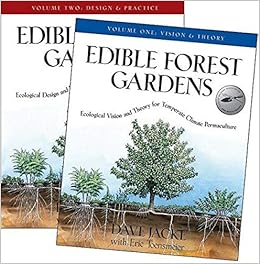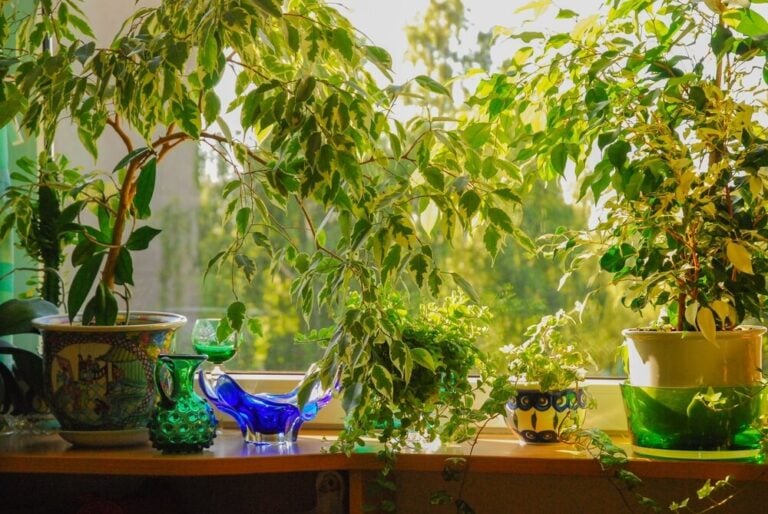Polyculture Farming – What Is It and Why Is It Better Than Monoculture?
Welcome! This article contains affiliate links, meaning I get a commission if you decide to make a purchase through my links, at no extra cost to you.
If you grow some or even most of your own food, you might think you’re doing your part to live more sustainably. However, if you’re not using polyculture farming or gardening, you could be missing out on big ways to lower your footprint – and increase your harvest!
Still, what is polyculture, and what is monoculture, and is one better than the other? Let’s get down to the bottom of it.
In this article, I’ll tell you all about this dynamic farming method, teach you what monoculture is, and discuss the difference between monoculture vs polyculture. Then, I’ll discuss how you can easily start incorporating polyculture into your garden, farm, or even just your flower boxes.
What Is Polyculture Farming or Gardening?
Polyculture is an agricultural method that aims to mimic nature in its design, planting species that complement each other in the same growing space. These species usually grow near each other in the wild and promote a more balanced ecosystem.
Essentially, polyculture farming focuses on biodiversity.
What Is Monoculture?

Monoculture farming and gardening are the cultivation of one type of crop or plant, usually on a large scale. For example, monoculture can be seen in fields with row after row of corn, as in most modern industrial farms.
Monoculture became more popular as a farming technique during the American Great Depression when supply could not meet demand. By creating large-scale, single-crop farms, farmers could finally keep up with demand and work towards stabilizing crop prices.
Monoculture farming has recently fallen out of fashion since it can be challenging to control pests and diseases on single-crop monoculture farms.
For example, if all you grow is potatoes, and the soil develops the potato blight fungus, your whole crop could die.
Monoculture vs Polyculture
Monoculture focuses on farming one type of plant, while polyculture emphasizes companion planting and biodiversity. So, when we compare monoculture vs polyculture farming, polyculture is the opposite of monoculture.
Conversely, if you want to see polyculture, look at the many species of trees, bushes, weeds, wildflowers, and grasses in a woodland forest.
An increasing number of farmers and gardeners are turning to polyculture techniques as they discover how it can eliminate pests and diseases, and improve the soil. In addition, it can increase your yield and the number of things you can grow.
Thus, the techniques used in monoculture vs polyculture farming can significantly affect the success of your plants.
How Did Polyculture Start?
Polyculture started during the dawn of agriculture and was the predominant farming method used by humans before large-scale industrial farming became popular.
Until the advent of modern farming, and even now in many parts of the world, polyculture was and is the dominant farming method. A well-known example is the “three sisters” cultivated by Native Americans, consisting of squash, corn, and beans.
In the three sisters’ polyculture, the tall corn supports the beans to grow on, the beans fix nitrogen into the soil to be used by other plants, and the squash creates a ground cover that repels both weeds and pests.
Additionally, another example is the 7-layer forest garden, which differentiates plants by their use of vertical space.
The 7-layer forest garden includes:
- A canopy layer of trees at the top,
- Followed by dwarf trees below,
- Then shrubs,
- A layer of herbaceous plants,
- The “rhizosphere” (i.e., root vegetables),
- Then ground cover plants (think strawberries),
- And finally, vines.

So, when distinguishing monoculture vs polyculture, polyculture is far older and better developed than monoculture.
To learn more about the differences between monoculture and polyculture, this quick video might help:
Is Permaculture the Same as Polyculture?
Polyculture is not the same as permaculture, but they are similar. Generally, polyculture refers to a method of agriculture or gardening, whereas permaculture is larger in scope.
Permaculture, like polyculture, looks at biodiversity. However, it also includes more elements of the farm and larger ecosystems, such as water and energy sources, buildings and construction, and farm layouts and designs.
Because polyculture and permaculture embrace many of the same ideas, such as mimicking nature, increasing biodiversity, and reducing the impact on the environment, you’ll often see the terms used interchangeably, especially when referring to gardening or farming techniques.
The Benefits of Polyculture Farming

There are lots of reasons to try polyculture, whether in a small kitchen garden or a large-scale farm operation. Still, perhaps one of the best reasons to try polyculture farming is that it can greatly increase your yield!
In monoculture vs permaculture gardening, permaculture is better for saving space. That’s because you can fit more plants in the same area by “filling in the gaps” with companion plants.
However, there are more benefits beyond a more plentiful bounty:
- Polyculture gardens have better resistance to pests. A common practice in polyculture is to surround some plants with herbs, whose strong smell confuses insects and masks the plant’s scent.
- Polyculture improves soil quality. As I mentioned with the Three Sisters, certain plants like legumes, clover, and lupine replace nutrients that other plants deplete from the soil, so less fertilizer is needed.
- Polyculture promotes biodiversity. Polyculture farms aim to increase diversity to mimic nature and safeguard against low yields. In polyculture, if one crop fails, another can substitute.
- Polyculture practices naturally suppress weeds. You can prevent and avoid unwanted weeds by utilizing more available space and planting cover crops.
- It’s better for the environment and your budget. With polyculture, there’s no need to buy fertilizers, pesticides, or fancy garden gadgets. All you need are some seeds! That makes it not only safer for the environment, cutting down on packaging and manufacturing emissions, but also saves you money.
- Polyculture saves on water. With the proper companion plants, your soil will get enough shade to stay moist all day long, even in the summer heat.
- You don’t need much space. Polyculture farming produces greater yields per square foot than monoculture since your companion plants live happily together, even when they’re very close.
Are There Any Downsides to Polyculture?

While there are many benefits, polyculture farming has a few downsides. Depending on your specific gardening methods, polyculture gardening can be more labor-intensive and counter-intuitive than other forms of gardening.
One method of sowing beds involves mixing and broadcasting seeds, which can result in beds that require ruthless thinning to avoid too much competition. However, this method also requires detailed knowledge regarding what each plant sprout looks like to differentiate them from weeds.
Identifying which seeds you have broadcast is one of my main issues, but when you see the resulting harvest, it’s worth it. I mean, who cares whether it’s zucchini, melon, cucumber, or pumpkin – it’s food, and it’s good!
Also, while it might be simple for Mother Nature to figure out which plants grow best together, it’s more challenging for mere mortals.
Factoring in soil acidity combinations, sun requirements, nutrient needs, and more for combinations of species could certainly require more complex planning than planting a row of each plant and calling it a day. However, there may be ways to make it easier – see Plant Guilds below.
How Can I Start Incorporating Polyculture?

You can start incorporating polyculture by transitioning or planning a garden or farm design that allows for biodiversity and integrating companion planting into your existing garden.
How you start utilizing these gardening methods depends on the status of your project.
Suppose you’re starting a new garden or farm. In that case, you’ll want to incorporate polyculture or permaculture techniques into the initial design of the farm to maximize the layout for efficiency and convenience. For example, you may want to consider where to collect and store water for irrigation.
If you already have an established garden, there are many ways you can begin to convert your current design to incorporate permaculture elements in a more gradual way.
Work With What You Have

Polyculture is all about working with nature instead of against it. So, start by identifying the anchor points of your garden: this includes any trees or perennials that won’t be going anywhere. Use these plants as the centerpieces to develop polycultures around.
When planting annuals for the next season, consider companion plants for these species.
Use Plant Guilds
Plant guilds might be my favorite feature of polyculture gardening, thanks to their easy-to-follow framework and an opportunity for creativity.
As mentioned above, determining the perfect combination of plants for a polyculture garden can be bewildering. Enter plant guilds.
Guilds utilize companion planting, but it’s done in a specific way that can simplify the process.
How to Build Plant Guilds
Every member of the plant guild should have one or more roles to play, and a proper guild should have at least one of the following:
- Nitrogen fixers. To avoid adding fertilizers, it helps to plant species that fix nitrogen back into the soil.
- Pollinators. Plant flowers or herbs to attract bees.
- Dynamic accumulators. This is a fancy term for deep-rooted plants or vegetables that can break up deeper soil and allow for better air and water absorption. These include comfrey, one of my absolute favorite accumulators. It is also the perfect companion plant for asparagus, my favorite vegetable!
- Repellers. These are often strong-smelling herbs that confuse bugs. See some examples of these in “Herbs That Repel Fleas and Flies.”
- Mulchers. Mulchers are usually perennial plants that add a steady supply of compost from dropped leaves. These are perfect for “chop and drop,” an awesome way to add carbon to your soil.
- Suppressors. These are usually bulb plants that act as an underground barrier to prevent plants like grasses from creeping into your planting zone and competing with other roots for nutrients. Lemongrass is one of my favorites here.
Depending on the kind of design you want, you can often choose plants that fulfill multiple roles.
For example, daffodils are excellent suppressors and attract pollinators. Many bug-repelling herbs work as ground cover.
Guilds are a wonderful chance to get creative and playful in the garden. In addition, they have a lot of flexibility so you can design them for all kinds of purposes.
Here’s a great example:
Vera Greutink, a polyculture gardener in the Netherlands, shows how a guild (she calls them ‘polycultures,’ but the idea is the same) can be designed with a type of cuisine in mind or even a specific dish.
Check out this video of her Italian polyculture featuring nine different veggies and herbs used in Italian cooking.
Examples of Successful Polyculture Farms
If you’re looking for more inspiration, check out these examples of permaculture and polyculture farms.
Miracle Farms, Quebec, Canada
Stefan Sobkowiak is the owner of Miracle Farms in Quebec, Canada, which features a 5-acre, 22-year-old permaculture orchard. The orchard is laid out in a pattern he calls “NAP,” which stands for Nitrogen-fixer, Apple, Plum, after the way the rows are planted.
He has devoted 4 acres of the farm to a u-pick system, which he says saves 40% of the expenses for the orchard. Also, the farm serves as a classroom, offering permaculture courses for farmers.
Findhorn Ecovillage
Located in Scottland, this human settlement is said to be entirely sustainable. It started in the 1980s and has grown into a full-scale community that aims to reduce its environmental footprint.
The village uses community-supported agriculture to provide organic produce to its citizens. Additionally, it features a “wind park” to harvest energy and has a waste-water treatment system that uses all living organisms, from bacteria to trees to fish, to purify the community’s sewage waste.
The Permaculture Institute of El Salvador (IPES)
According to their website, permaculture techniques began to show up in El Salvador in the 1980s, and for years afterward, the Campesinos, or peasant farmers, began to share information about permaculture.
The institute began in 2002 to support the sharing of knowledge of this kind of farming. In 2008, the Suchitoto farm was started with volunteers and students working the land using permaculture techniques.
Primrose Farm, Wales
Primrose Farm in Wales is under the management of Paul Benham, who moved out to the farm in 1985.
The farm is very small, consisting of only one and one-half acres, but according to news reports, Benham makes over £25,000 a year off his produce there.
Primrose Farm and Benham have won many awards and gotten tons of acclaim over the years. Nowadays, Primrose Farm hosts retreats, workshops, and classes to promote and spread information about polyculture.
Stonecroft Farms, Wisconsin
Mike Trinklein of Stonecroft farms isn’t just a successful permaculture farmer, he’s also got quite the personality. Mike loves to share all of his failure stories, which he writes about on his website.
However, despite all of the failures he painstakingly shares with us, he has seen quite a bit of success on Stonecroft Farms, primarily selling lavender, peaches, hazelnuts, cherries, aronia, and beans.
Polyculture Is the Way to Go
Whether you’re short on garden space and want to maximize yield, or you run a multi-acre farm and want to reduce your environmental footprint, polyculture farming may be the way to go.
When it comes to sustainability, practicality, and variety, permaculture always wins the debate over monoculture vs polyculture.
With a little consideration and planning, you can begin incorporating polyculture techniques and be on your way to a thriving, sustainable farm or garden.
So, what do you think, will you grow a polyculture garden? What are your favorite guilds? Share your thoughts below in the comments!
More on Gardening, Polyculture, and Permaculture:












